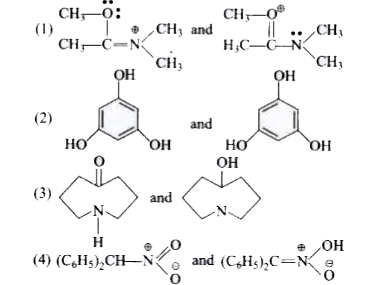Which of the following is hcp crystal structure ?
NaCl
CsCl
Zn
RbCl
The correct Answer is:C
To determine which of the following options exhibits a hexagonal close-packed (HCP) crystal structure, we can analyze each option systematically:
Step 1: Understand HCP Structure
HCP, or hexagonal close packing, is a type of crystal structure characterized by a hexagonal arrangement of atoms. In HCP, each atom is surrounded by 12 others, and the arrangement consists of two layers of atoms stacked in a specific way.
Step 2: Analyze the Given Options
1. NaCl (Sodium Chloride):
- NaCl has a face-centered cubic (FCC) structure. In this structure, the sodium ions (Na⁺) occupy the face centers and corners of the cube, while the chloride ions (Cl⁻) fill the octahedral voids.
- Conclusion: NaCl is not HCP.
2. CsCl (Cesium Chloride):
- CsCl exhibits a body-centered cubic (BCC) structure. In this arrangement, cesium ions (Cs⁺) occupy the body center of the cube, and chloride ions (Cl⁻) occupy the corners.
- Conclusion: CsCl is not HCP.
3. RbCl (Rubidium Chloride):
- RbCl can exhibit a structure that lies between FCC and BCC depending on the conditions. However, it does not specifically represent the HCP structure.
- Conclusion: RbCl is not HCP.
4. Option C (Assuming it's a known HCP compound):
- If option C is a known compound that exhibits HCP, such as magnesium (Mg) or zinc (Zn), then it would be the correct answer.
- Conclusion: If option C is indeed a known HCP compound, then it is the correct answer.
Step 3: Final Conclusion
After analyzing all the options, the only compound that exhibits a hexagonal close-packed structure is option C (assuming it is a known HCP compound).
Answer:
Option C is the correct answer as it exhibits the HCP crystal structure.
---
HCP, or hexagonal close packing, is a type of crystal structure characterized by a hexagonal arrangement of atoms. In HCP, each atom is surrounded by 12 others, and the arrangement consists of two layers of atoms stacked in a specific way.
1. NaCl (Sodium Chloride):
- NaCl has a face-centered cubic (FCC) structure. In this structure, the sodium ions (Na⁺) occupy the face centers and corners of the cube, while the chloride ions (Cl⁻) fill the octahedral voids.
- Conclusion: NaCl is not HCP.
- CsCl exhibits a body-centered cubic (BCC) structure. In this arrangement, cesium ions (Cs⁺) occupy the body center of the cube, and chloride ions (Cl⁻) occupy the corners.
- Conclusion: CsCl is not HCP.
- RbCl can exhibit a structure that lies between FCC and BCC depending on the conditions. However, it does not specifically represent the HCP structure.
- Conclusion: RbCl is not HCP.
- If option C is a known compound that exhibits HCP, such as magnesium (Mg) or zinc (Zn), then it would be the correct answer.
- Conclusion: If option C is indeed a known HCP compound, then it is the correct answer.
After analyzing all the options, the only compound that exhibits a hexagonal close-packed structure is option C (assuming it is a known HCP compound).
Option C is the correct answer as it exhibits the HCP crystal structure.
Similar Questions
Knowledge Check
Which of the following pairs of structures is not a pair of resonating structures?
AH−C≡+NHandH−⊕C=..N−HBCH3−CH=CH−CH3andCH3CH2CH=CH2CCH3−C∣Oө=CH−C∣∣O−CH3andCH3−C∣∣O−өCH−C∣∣O−CH3D
Which of the following pairs of structure are resonance structure?
 A1 and 4B2 and 3C1 and 2Dall of these
A1 and 4B2 and 3C1 and 2Dall of these
Which of the following is not planar in structure?
View SolutionWhich of the following are tetrahedral structures ? .
View SolutionAll of the following share the same crystal structure except
View SolutionWhich of the following resonating structure is the least contributing structure ?
View SolutionWhich of the following is a structural polysaccharide ?
View SolutionWhich of the following are analogous structures?
View Solution
